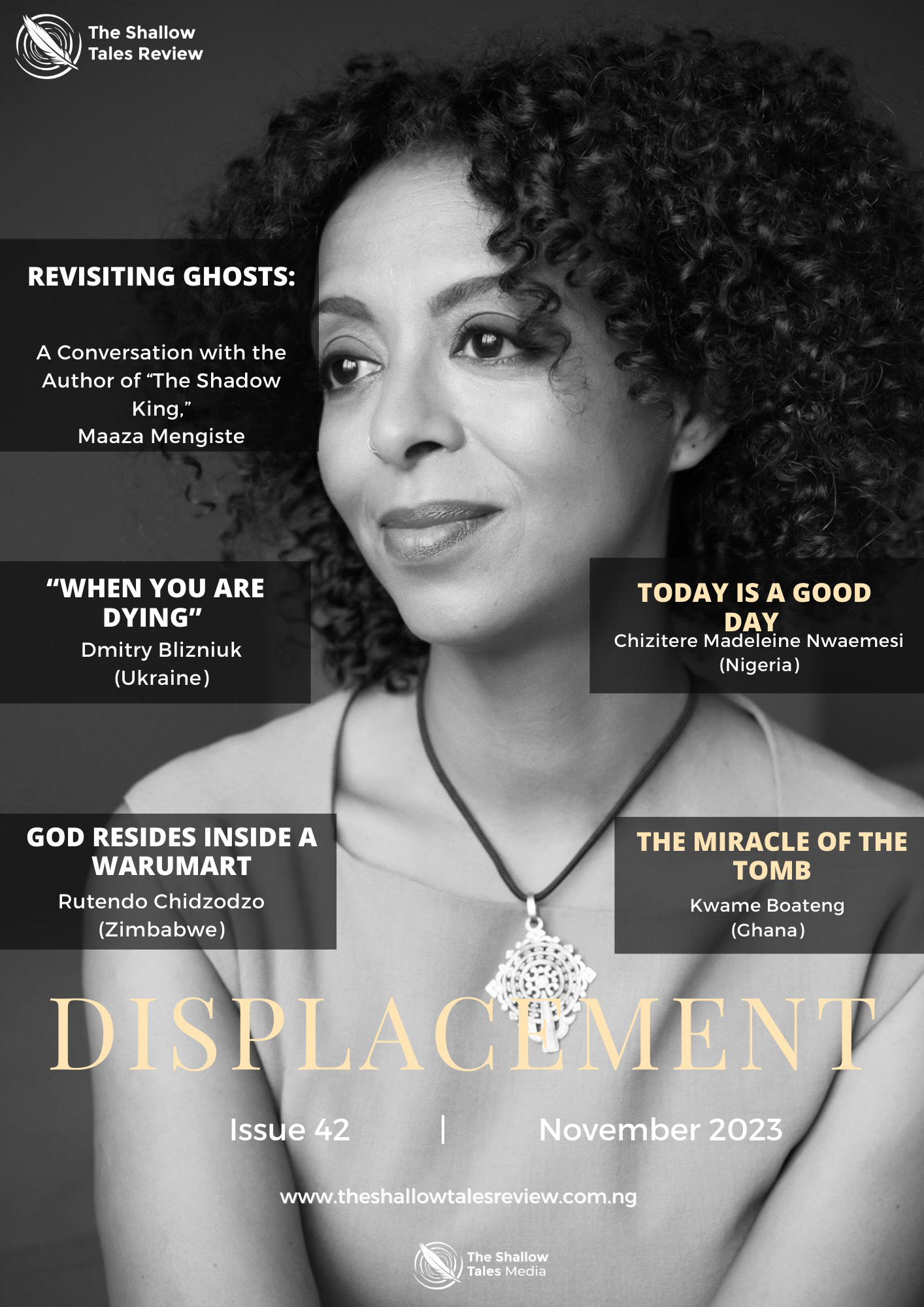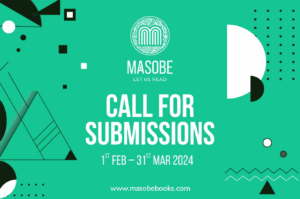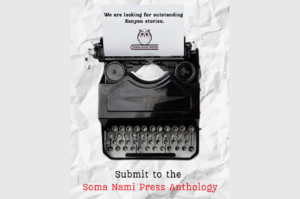
The Shallow Tales Review just published its 42nd issue themed “Displacement” and it is absolutely gorgeous. Take a look!
The Shallow Tales Review is a Nigerian-based tri-annual digital literary magazine publishing African and Black Literature. It was founded in August 2019 by Nigerian writer, critic and editor, Nzube Nlebedim.
Issue 42: “Displacement” is headlined by Ethiopian writer and Booker Prize-shortlisted author of The Shadow King, Maaza Mengiste. The issue features a conversation with Mengiste on the topics of fiction, Ethiopia, and dark histories.
This issue also includes fiction, essays and poetry from writers across Nigeria, Zimbabwe, Ukraine, India, and Ghana, including Khaloud Al-Muttalibi, Abdullah Jimoh, Junaid Ahmed Ahangar, John Paul Caponigro, Dmitry Bliznuik, Rutendo Chidzodzo, Ejiro Edwards, and others. All rt and photography in the issue is curated by Nigerian photographer, Ofem Ubi.
The editorial note was written by poetry editor Chidiebube onye Okohia and titled “Where Was a Place?”. He discusses the importance of theme in some of the included works:
Issue forty-two presents twelve contributors (and the interviewee—this time, the Booker Prize-shortlisted novelist, Maaza Mengiste), using language in riveting and resplendent ways. Displacement is our theme and boy, does it fit! Without being hyperbolic, this issue captures a literary flowering. Whether you’re being drawn into the vivid and vital narrative of Rutendo Chidzodzo’s God Resides inside a Warumart, or being caressed by the honeyed storytelling in Deming by Cynthia Chukwuma, or you pause your breath and marvel at the wondrous magnificence of Junaid Ahmed Ahangar’s “Landscape of the Partisan,” or you eventually manage to scoop the near-photographic rendering of the daily lives of a dense neighbourhood in Jimoh Abdullah’s “Ajegunle,” the sleuth-eyed observer will surely notice that a more or less sour and sordid idea and material is delineated and presented as a wholesome confection by each writer and poet. A jardinière of creativity. And yet, the glue across all these pieces is their reach to hold and then pour out, to exposit and define displacement, in the very many ways allowed with language, with voice, with story.
Check out Issue 42: “Displacement” here.









COMMENTS -
Reader Interactions